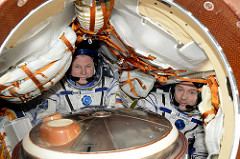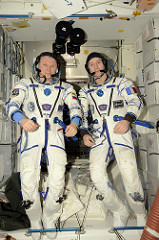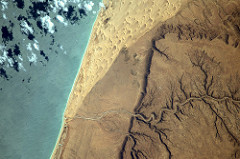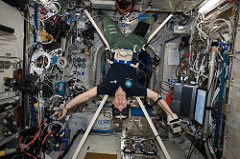Thomas Pesquet posted a photo:
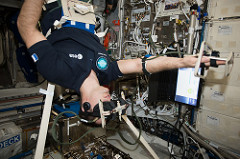
Last week we ran the Grasp experiment with a VR headset to test how my brain interprets visual cues without gravity – it was a bit disconcerting, but very fun to be in the Space Station which is already out-of-this-world while also being in another (virtual) reality. The straps are to ensure we don't float away and bump into expensive or critical equipment.
Researchers are trying to find out how people's brains manage complex tasks like catching a ball or frisbee or pouring a glass of water. How does gravity help our brains calculate where and how to move our hands to be at the exact place at the right time? Running the Grasp experiment in weightlesness but also in virtual reality offers the researchers on Earth many possibilities to fine-tune scenarios and really get to the bottom of how our brain works.
L’expérience GRASP m’a fait porter un casque de réalité virtuelle pour tester les réactions de mon cerveau à des repères visuels en micro-gravité. Un peu déconcertant, mais sympa de se retrouver dans un « autre » monde tout en flottant à bord de la Station spatiale, un environnement qui sort déjà en soi de l’ordinaire ! Les sangles nous empêchent de dériver et de venir se cogner contre des équipements coûteux.
Les chercheurs veulent savoir comment le cerveau s’y prend pour effectuer des tâches complexes, comme attraper une balle en vol ou remplir un verre : comment la gravité nous aide-t-elle à calculer quel mouvement faire et où déplacer la main au bon moment ? La réalité virtuelle en impesanteur offre aux scientifiques la possibilité de tester une multitude de scénarii ciblés et ainsi plonger dans les secrets de notre cerveau…
Credits: ESA/NASA
iss051e049161
